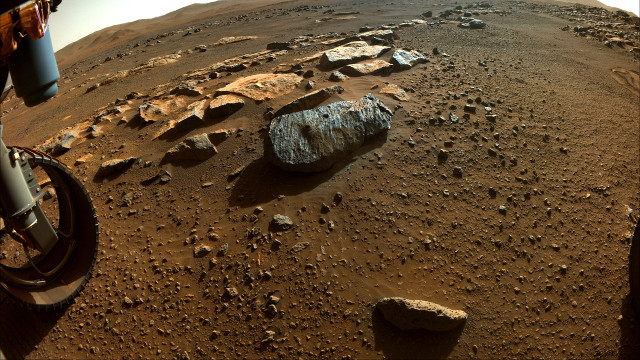
NASA has published the first results of the examination of the first two rock samples collected in recent days by the Mars Rover Perseverance in the Jezero crater on planet Mars. After last month’s disappointment, with the failure of the first attempt to take a sample of a rock that proved too crumbly, there were two successes. A rock nicknamed Rochette proved suitable and Perseverance was successful in taking a sample nicknamed Montdenier on September 6 and a sample nicknamed Montagnac on September 8. The most interesting indication is that there was water in the area for a long time when the environment was potentially habitable.
Arrived on Mars on February 18, 2021, the Mars Rover Perseverance is part of NASA’s Mars 2020 mission. At this early stage, the Ingenuity helicopter received particular attention because it’s the first flying vehicle sent to the planet Mars. However, Perseverance also began its scientific mission in the Jezero crater, a very interesting place from a geological point of view because it was a lake but many questions still remain and a rover is needed in place to find some answers.
The samples taken from the Rochette rock are the first to be obtained from a basaltic rock that could be the product of lava flows generated by an ancient volcanic activity. The presence of crystalline minerals in this type of rock can favor radiometric dating. That would help to reconstruct the chronology of the events related to the environment evolution in the Jezero crater.
One of the questions regarding the lake that existed in the Jezero crater concerns the duration of its existence. In a remote era when liquid water was common on Mars, a flood could have filled that crater and then dried up within a few decades. Samples of the Rochette rock provided the first answers from this point of view showing a level of alteration that suggests the presence of water for a much longer time even if only a vague estimate of a scale of millions of years was possible.
Among the alterations found in the rock samples is the presence of salts. Probably, they remained when the water evaporated. Their presence is also interesting because they may have trapped tiny bubbles of the water that flowed in the lake. On Earth, salts also help to preserve traces of life.
Actually, there’s no absolute certainty that the Rochette rock was at the bottom of the lake and wasn’t carried there by other water streams or by the wind. This is the reason why taking samples from more rocks is needed to provide a broader picture at a geological and hydrological level also with the identification of any rocks transported from other places.
The next attempts to collect samples will be conducted in another area, nicknamed South Séítah. It’s only 200 meters from the Rochette rock but there should be important geological differences. The area just explored probably contains one of the more recent layers of the Jezero crater while in South Séítah the Mars Rover Perseverance should have access to a much older layer.
The most interesting samples will be sealed in small titanium containers that will be left to be collected in a future mission that will aim to bring them back to Earth. The Mars Rover Perseverance’s analysis instruments are sophisticated but only laboratories on Earth can conduct comprehensive analyzes to obtain all possible information on the history of a planet that, when it was young, was much more like Earth.

